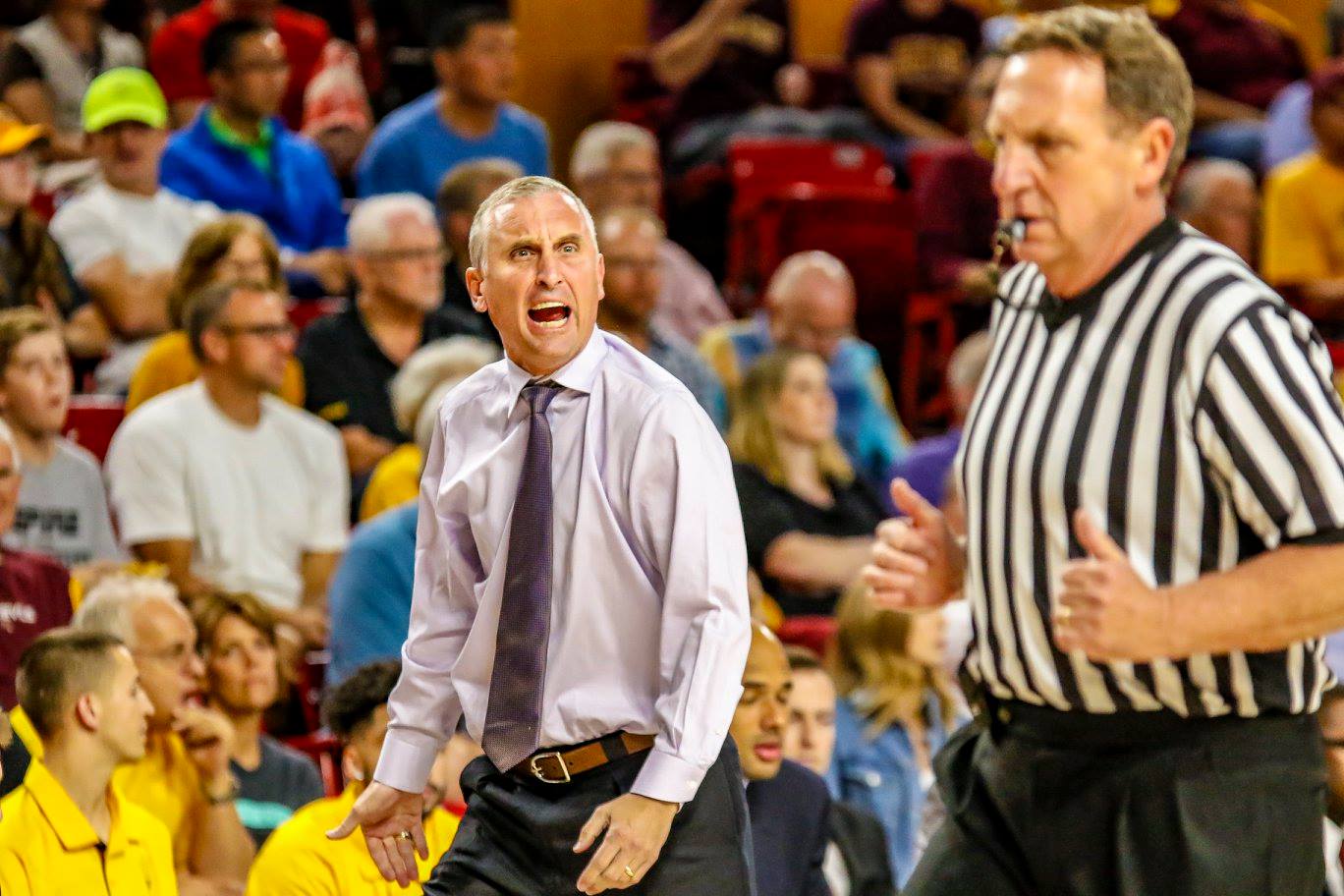
(Photo: Brady Klain/WCSN)
Arizona State men’s basketball had a tall task entering its first game of the season.
Before any matchup challenges, the Sun Devils had to deal with a trip across the globe to Shanghai, China. There, they were set to face a Colorado team with whom they split last year’s season series.
Adding to the challenge, ASU starting forwards Taeshon Cherry and Romello White — the defacto starting center — were suspended for the game due to a violation of team rules, according to ASU head coach Bobby Hurley, leaving the Sun Devils short-handed in the frontcourt.
Their absence proved costly.
Despite freshman forward Jalen Graham’s five blocks, ASU struggled with rim protection and post defense, a role that White was expected to serve. It was out-rebounded 48-36, had a disastrous 0.75 assist-to-turnover ratio and a field goal percentage of 38.5 percent, 2.5 percent lower than the team’s shooting percentage from behind the arc.
Despite those issues and the 81-71 loss, ASU showed some promise. The Sun Devils staged a second half comeback which saw them tie the game at 52 and demonstrated solid ball-movement and guard play.
The Sun Devils were average at moving the ball last season. They were ranked No. 156 in the country in assists-per-game, putting them amongst the nation’s top 44 percent. However, those numbers teetered around average, as demonstrated by the graph below.

Despite ASU’s average assist numbers, it was still above average in offensive efficiency. Still, it did not stand out on either axis.
ASU did not pass extensively last season because they didn’t have to.
Former ASU guard and current Oklahoma City Thunder two-way play Luguentz Dort was the team’s leading scorer and was a hallmark in ASU’s offense, among other players. At times, Dort was damaging – ASU finished tied for 246th in the country for fewest turnovers-per-game and Dort averaged 2.9 turnovers-per-game himself. Former Murray State guard and current Memphis Grizzlies rookie, Ja Morant, led the country with 5.2 turnovers-per-game.
Hurley and the Sun Devils had to redesign their offense to accommodate junior guard Remy Martin, who is tasked with playing without Dort in 2019. To take the burden off Martin’s shoulders, ASU’s system has become more predicated on ball movement than it was a year ago.
In the video above, junior transfer guard Alonzo Verge brings the ball up before passing it to the more savvy distributor, Martin. Martin then attacks the rim before kicking out to freshman guard Jaelen House. House follows Martin’s path, setting into motion a drive-and-kick scheme before passing it back out to sophomore guard Elias Valtonen. As Valtonen receives the pass and subsequently drives to the basket, House picks a spot in the corner, which leaves him open as his man is helping on Valtonen. Valtonen realizes this and moves the ball out to House, who gets a good shot off.
House’s shot missed, but that should not be the focus. The Sun Devils working to get shots like that — a good one that forces Colorado’s defense to work because of rapid ball movement — is a positive sign. The play above was one of just 12 threes ASU missed that night, further demonstrating the importance of such plays and the high percentage at which ASU can convert them.
Despite its demonstrated effectiveness, this type of ball movement cannot be relied on so heavily. The majority of teams with lengthy and athletic players on the wing will be able to snuff out the passing lanes by using their size to prohibit drives to the rim. That’s when the isolation scoring that Martin and Verge bring to this year’s team becomes critical.
The play above is a combination of ball movement and isolation principles. The Sun Devils get players moving off the ball to keep the Colorado defense on its toes, however, most of it serves as a distraction. After Martin receives the final pass at the top of the key from House, he attacks the rim and gets the layup. Three Sun Devils are spacing the floor on the right side of the court, and the fourth — Graham — trails Martin but gives him enough space after setting the screen on the arc.
This is a tactful design from Hurley. It takes advantage of his guards’ isolation skills, but does it efficiently. Martin doesn’t have to dribble much to shake defenders in this play as a lot of that work is done for him thanks to floor spacing.
When ball movement completely breaks down, Hurley has Martin and Verge to do things like this:
The first play is just Martin taking advantage of his shiftiness and size. The quickness and tenaciousness he possesses is enough to beat Colorado senior forward Lucas Siewert.
During the second play, Verge shows off his speed and court vision by grabbing the rebound and sprinting straight down-court. Junior forward Kimani Lawrence and Graham flanked Verge and made their defenders flare out to cover them, rather than helping in on Verge. By the time they recover, Verge has the ball in the bucket.
The Colorado loss can be pinned largely on the absence of White and Cherry, turnovers and rebounding trouble. With those two back, ASU should see some of those issues be resolved.
With efficient ball movement and savvy creations of isolation, the Sun Devils’ offensive structure resembles Hurley’s ‘Guard U’ team from two years ago. The 2019 squad will be able to further solidify its strategies on Thursday night against Central Connecticut State.



You must be logged in to post a comment.